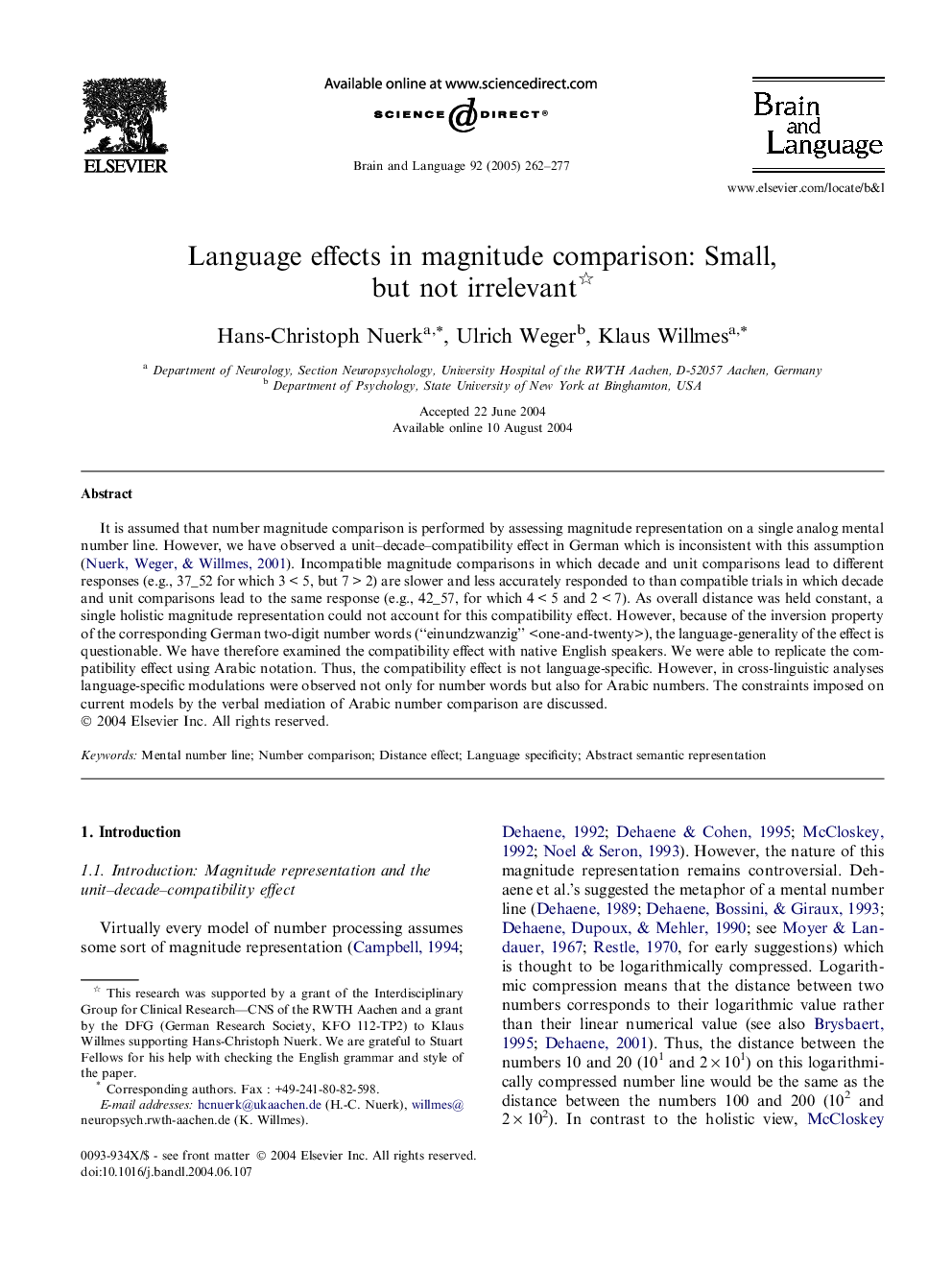| Article ID | Journal | Published Year | Pages | File Type |
|---|---|---|---|---|
| 10456896 | Brain and Language | 2005 | 16 Pages |
Abstract
It is assumed that number magnitude comparison is performed by assessing magnitude representation on a single analog mental number line. However, we have observed a unit-decade-compatibility effect in German which is inconsistent with this assumption (Nuerk, Weger, & Willmes, 2001). Incompatible magnitude comparisons in which decade and unit comparisons lead to different responses (e.g., 37_52 for which 3Â <Â 5, but 7Â >Â 2) are slower and less accurately responded to than compatible trials in which decade and unit comparisons lead to the same response (e.g., 42_57, for which 4Â <Â 5 and 2Â <Â 7). As overall distance was held constant, a single holistic magnitude representation could not account for this compatibility effect. However, because of the inversion property of the corresponding German two-digit number words (“einundzwanzig” ), the language-generality of the effect is questionable. We have therefore examined the compatibility effect with native English speakers. We were able to replicate the compatibility effect using Arabic notation. Thus, the compatibility effect is not language-specific. However, in cross-linguistic analyses language-specific modulations were observed not only for number words but also for Arabic numbers. The constraints imposed on current models by the verbal mediation of Arabic number comparison are discussed.
Related Topics
Life Sciences
Neuroscience
Biological Psychiatry
Authors
Hans-Christoph Nuerk, Ulrich Weger, Klaus Willmes,
